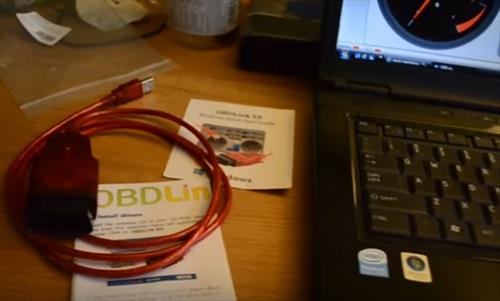Modern vehicles are equipped with sophisticated on-board diagnostics systems known as OBD-II (On-Board Diagnostics II). These systems monitor and report the health of various vehicle components, helping users and mechanics identify potential issues. While dedicated OBD-II scanners are available, you can also leverage the power of your laptop or PC to turn it into a versatile OBD-II scanner. In this guide, we’ll walk you through the steps to transform your computer into a valuable tool for diagnosing your vehicle.
What You’ll Need:
- OBD-II Adapter:
- Purchase a compatible OBD-II Bluetooth or USB adapter. Ensure it supports the OBD-II protocol used by your vehicle.
- Laptop or PC:
- Ensure your computer has either Bluetooth or USB ports, depending on the type of OBD-II adapter you choose.
- OBD-II Diagnostic Software:
- Select OBD-II diagnostic software that is compatible with your OBD-II adapter. Popular options include Torque, FORScan, ScanMaster, and others.
Step-by-Step Guide:
1. Locate the OBD-II Port:
- Find the OBD-II port in your vehicle. This port is typically located beneath the dashboard near the driver’s seat, but it’s essential to consult your vehicle’s manual for the precise location.
2. Connect the OBD-II Adapter:
- Plug the OBD-II adapter into the OBD-II port securely. Ensure it clicks into place, establishing a reliable connection.
3. Power On Your Vehicle:
- Turn the ignition key to the “ON” position. Some adapters may require the engine to be running, so follow the instructions provided with your specific adapter.
4. Connect the Adapter to Your Computer:
- If you have a Bluetooth adapter, enable Bluetooth on your laptop or PC and pair it with the OBD-II adapter. For USB adapters, simply plug it into a USB port.
5. Install the OBD-II Software:
- Download and install the OBD-II diagnostic software on your laptop or PC. Visit the official website of the chosen software to ensure you download the latest version.
6. Configure the Software:
- Open the OBD-II software and configure it to communicate with your OBD-II adapter. This typically involves selecting the correct COM port (for USB) or pairing (for Bluetooth).
7. Read Diagnostic Information:
- Once the connection is established, use the software to read diagnostic information from your vehicle. You can access data such as trouble codes, sensor readings, and more.
8. Interpret the Results:
- If your vehicle has trouble codes, the software will provide descriptions of the issues. Research these codes online or consult with a mechanic to understand and address the problems effectively.
9. Optional: Clear Codes or Make Adjustments:
- Some OBD-II software allows you to clear trouble codes or make certain adjustments. Exercise caution and only perform actions if you understand their implications.
10. Disconnect Safely:
- After obtaining the necessary information, safely disconnect the OBD-II adapter from the port.
Tips and Considerations:
- Compatibility:
- Ensure your OBD-II adapter is compatible with both your vehicle and the chosen OBD-II software.
- Safety First:
- Be cautious when using diagnostic tools, and avoid making changes unless you understand their consequences.
- Stay Updated:
- Regularly update your OBD-II software for bug fixes, improvements, and expanded vehicle support.
By following these steps, you can easily set up your laptop or PC as an OBD-II scanner, providing you with valuable insights into your vehicle’s health and potentially saving you time and money on diagnostics. Always refer to the specific instructions provided with your OBD-II adapter and software for accurate and safe usage.
The laptop must be connected to the OBDII port using a compatible cable or Bluetooth dongle. If the OBDII dongle is used, make sure the laptop or PC is Bluetooth enabled. A USB to OBD2 cable is the most common method and will interface from a laptop to a vehicle’s OBDII port. There are several USB to OBD2 cables that can be purchased and connected. Software is also included that displays error codes, clear error codes, and many other features.
The best Windows OBDII software for a laptop or PC will vary based on what is being done. For more advanced usage, such as programming the onboard computer (ECU), other software will likely be better. The above list is the most popular OBDII Windows software that is currently available.
Can I use a laptop as an OBDII scanner? Yes, a laptop can be used as an OBD scanner and with the right software they work very well. This includes almost any laptop with a USB port and Windows 7, 10 or 11.
How to connect the OBDII connector to a laptop? An interface cable or Bluetooth dongle is purchased that converts the OBDII signals. The USB converter cable is connected to the laptop and the software is used to read the codes. The software interfaces with a vehicle computer (PCM/ECM) to read codes and clear them if necessary.
